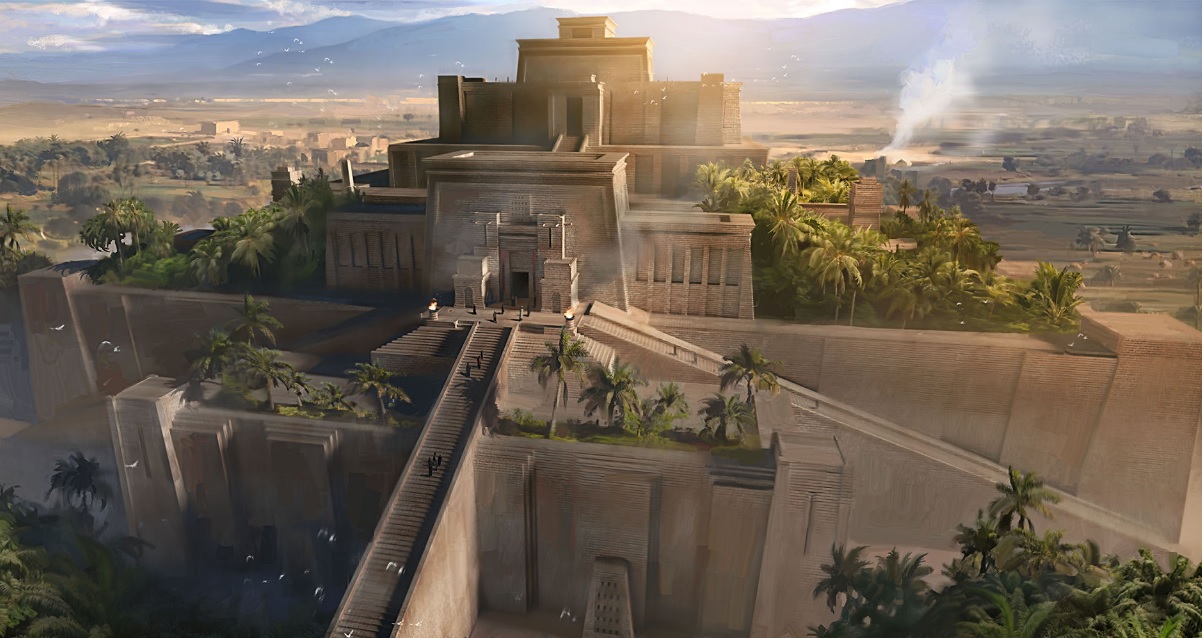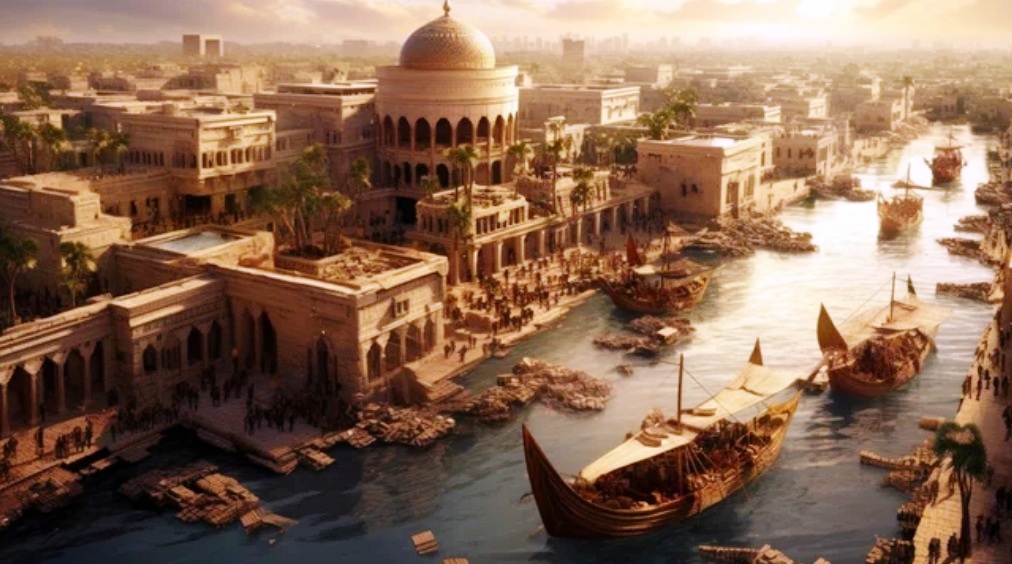Difference between revisions of "Mesopotamian History"
Tao alexis (talk | contribs) |
Tao alexis (talk | contribs) |
||
| Line 14: | Line 14: | ||
[[File:Ancient Lagash.jpg|left|350|thumb|Ancient Lagash]] | [[File:Ancient Lagash.jpg|left|350|thumb|Ancient Lagash]] | ||
The construction of elaborate temples and ziggurats continued, as pottery, metalwork, sculpture and architectural design all thrived. Small scale conflicts arose from territorial disputes over land, water sources and agricultural areas. Some states sought to exert dominance over other states — but a series of alliances assured that no single city-state could assert itself through military engagements. Nonetheless, fortifications proliferated and the importance of the ruler expanded as one who led the city in battle. | The construction of elaborate temples and ziggurats continued, as pottery, metalwork, sculpture and architectural design all thrived. Small scale conflicts arose from territorial disputes over land, water sources and agricultural areas. Some states sought to exert dominance over other states — but a series of alliances assured that no single city-state could assert itself through military engagements. Nonetheless, fortifications proliferated and the importance of the ruler expanded as one who led the city in battle. | ||
| + | |||
| + | == Akkad == | ||
Revision as of 19:06, 21 August 2023
Mesopotamian History begins with the rise of the Sumerian civilisation, which emerged during the Chalcolithic Period about 4500 BC, from the Ubaid culture. Mesopotamia, meaning "the land between the rivers," refers to the area of the Tigris and Euphrates rivers, above the body of water known as the Persian Gulf. The establishment of complex city-states, advanced agricultural techniques, governance systems supported by cuneiform writing, and religious practices, laid the foundation for the empires that would follow in the region.
Contents
As a reliable source of water for irrigation, the river valleys served as natural transportation routes for trade and communication; this led to the rise of urban centres, city-states, each with their own rulers, laws and governance systems. City-states were centered around a temple complex, with priests becoming iconic of the ruling class. Crude magical spells enabled the establishment of the clerical class, the first to appear after the fighter.
Uruk Period
Lasting from 4000 to 2900 BC. Named after the period's largest centre, the Uruk period featured the first of massive mud-brick structures in the form of temples and "ziggurats," a type of stepped, pyramid-like temple town characteristic of ancient Mesopotamia. These served as religious centres and were symbolic of the divine presence of Gods in Sumerian culture. Different individuals at this time focused on specific crafts and trades, contributing to the development of a more complex economy.
Record-keeping in the form of clay tokens and then, later, clay tablets, impressed with symbols and sights, kept track of quantities of goods and administrative tasks. The period saw advancements in finer quality pottery with intricate designs, while food production increased population growth. The central influential god at the time was Inanna, whose instructions shaped societal and cultural practices. Uruk in particular, as the largest centre, as a centre of trade and artisanship, played a significan role in shaping the regional culture.
Early Dynastic Period
Lasting from 2900 to 2350 BC. The rise of other cities, such as Ur, Lagash and Kish, resulted from the growth of population. Control over these required a reliable transference of power; hereditary leadership establish the concept of dynastic, multi-generation authority. Management of resources called for taxation, and bureaucracies to manage the flow of money to the state. The region's earliest legal codes provided guidelines for resolving disputes, addressing crimes and regulating social behaviour.
The construction of elaborate temples and ziggurats continued, as pottery, metalwork, sculpture and architectural design all thrived. Small scale conflicts arose from territorial disputes over land, water sources and agricultural areas. Some states sought to exert dominance over other states — but a series of alliances assured that no single city-state could assert itself through military engagements. Nonetheless, fortifications proliferated and the importance of the ruler expanded as one who led the city in battle.

